
Athenry is a town in County Galway, Ireland, which lies 25 kilometres (16 mi) east of Galway city. Some of the attractions of the medieval town are its town wall, Athenry Castle, its priory and its 13th century street-plan. The town is also well known by virtue of the song "The Fields of Athenry".

Oranmore is a town near the city of Galway in County Galway, Ireland. It is also the name of the civil parish and Roman Catholic parish in which the town lies.
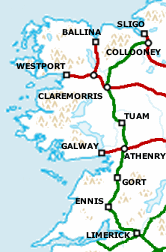
The Western Railway Corridor is a term, used since c. 2003, for a partly disused railway line running through the west of Ireland. Currently two sections of the line, from Limerick via Ennis to Athenry and from Collooney to Sligo, see regular services, with other sections either closed or only technically classed as open.
Menlough is a village in the civil parish of Killoscobe in northeast County Galway, Ireland. It is located 35 km from Galway, 27 km from Tuam, 30 km from Ballinasloe, and 20 km from Athenry. Together with nearby Skehana, Menlough is a half-parish within the diocesan parish of Killascobe in the Roman Catholic Archdiocese of Tuam.

Galway railway station is a railway station which serves the city of Galway in County Galway. The station itself is located in the centre of the city in Eyre Square.
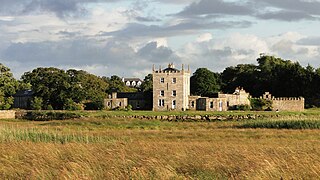
Kilcolgan, is a village on the mouth of the Kilcolgan River at Dunkellin Bay in County Galway, Ireland. The settlement is at the junction of the N67 and R458 roads, which lies between Gort and Clarinbridge. The village is near the site of the Galway Bay drowning tragedy. Kilcolgan was designated as a census town by the Central Statistics Office for the first time in the 2016 census, at which time it had a population of 141 people.

Fiddaun Castle is a tower house in Tubber, County Galway, close to the border of County Clare in Ireland. It is a National Monument of Ireland.

Ballyglunin railway station is a disused railway station close to the village of Ballyglunin in County Galway. Closed in 1976, the station building is a protected structure which is known for its association with the 1952 film, The Quiet Man.
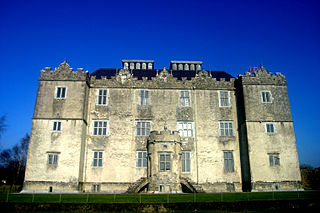
Portumna Castle is a semi-fortified house in Portumna, County Galway, Ireland which was built in the early 17th century by Richard Burke, 4th Earl of Clanricarde.
Tonaroasty is an abandoned village and national monument located in County Galway, Ireland.

Merlin Park Castle is a tower house and National Monument located in County Galway, Ireland.
St. Cuan's Well is a holy well and National Monument located in County Galway, Ireland.

Athenry Castle is a tower house and National Monument located in Athenry, Ireland.

Killeen Cowpark is a medieval church and a National Monument in County Limerick, Ireland.
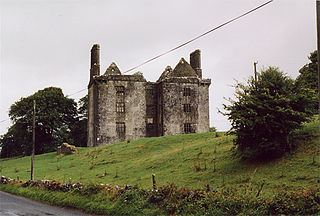
Glinsk Castle is a tower house and National Monument located in County Galway, Ireland.

Killursa is a medieval church and national monument in County Galway, Ireland. The church is located on the outskirts of Westport, about east-northeast of the town of Galway. It has a rectangular mass in the Early Christian or Romanesque style, with an octagonal tower at its northeast corner. The tower was apparently added in the 15th century. The church is datable from the 12th century, and may have been founded by St. Columba. The current structure is from the 16th century.
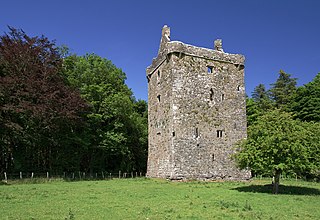
Feartagar Castle, also called Jennings Castle, is a tower house and National Monument located in County Galway, Ireland.
Kiltiernan Church is a medieval church and National Monument in County Galway, Ireland.

Kiltartan Castle is a tower house and National Monument located in County Galway, Ireland.
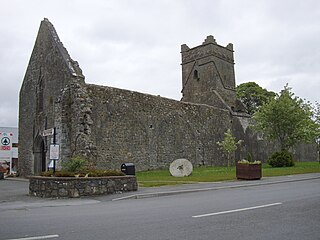
Dunmore Abbey is a medieval Augustinian friary and national monument located in County Galway, Ireland.
















